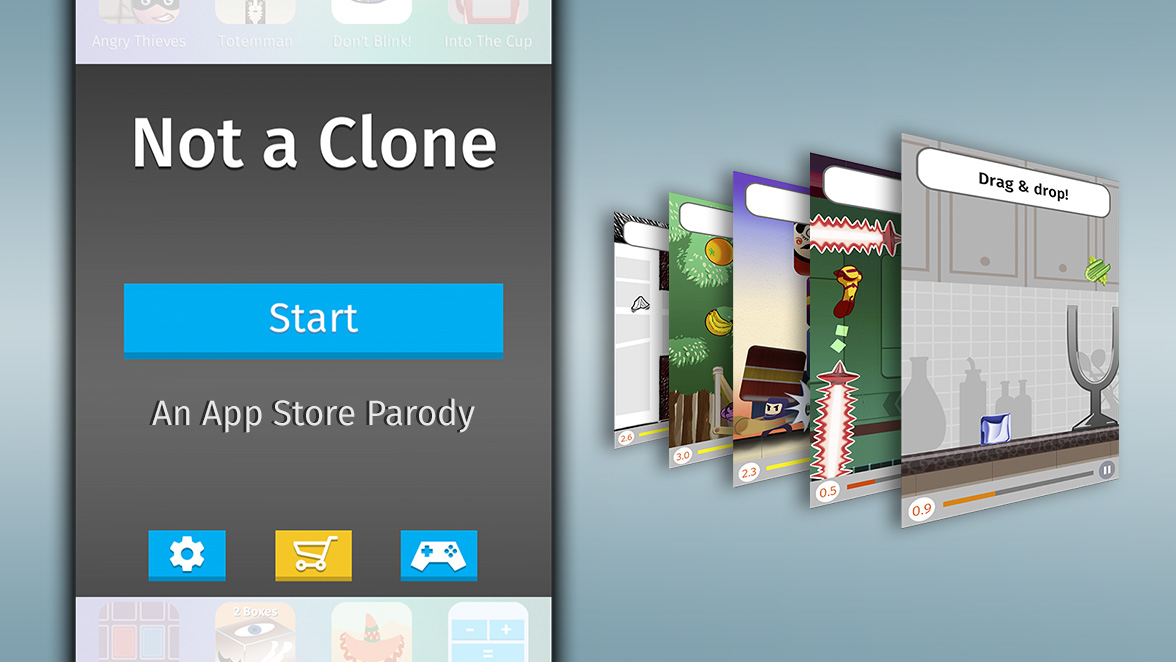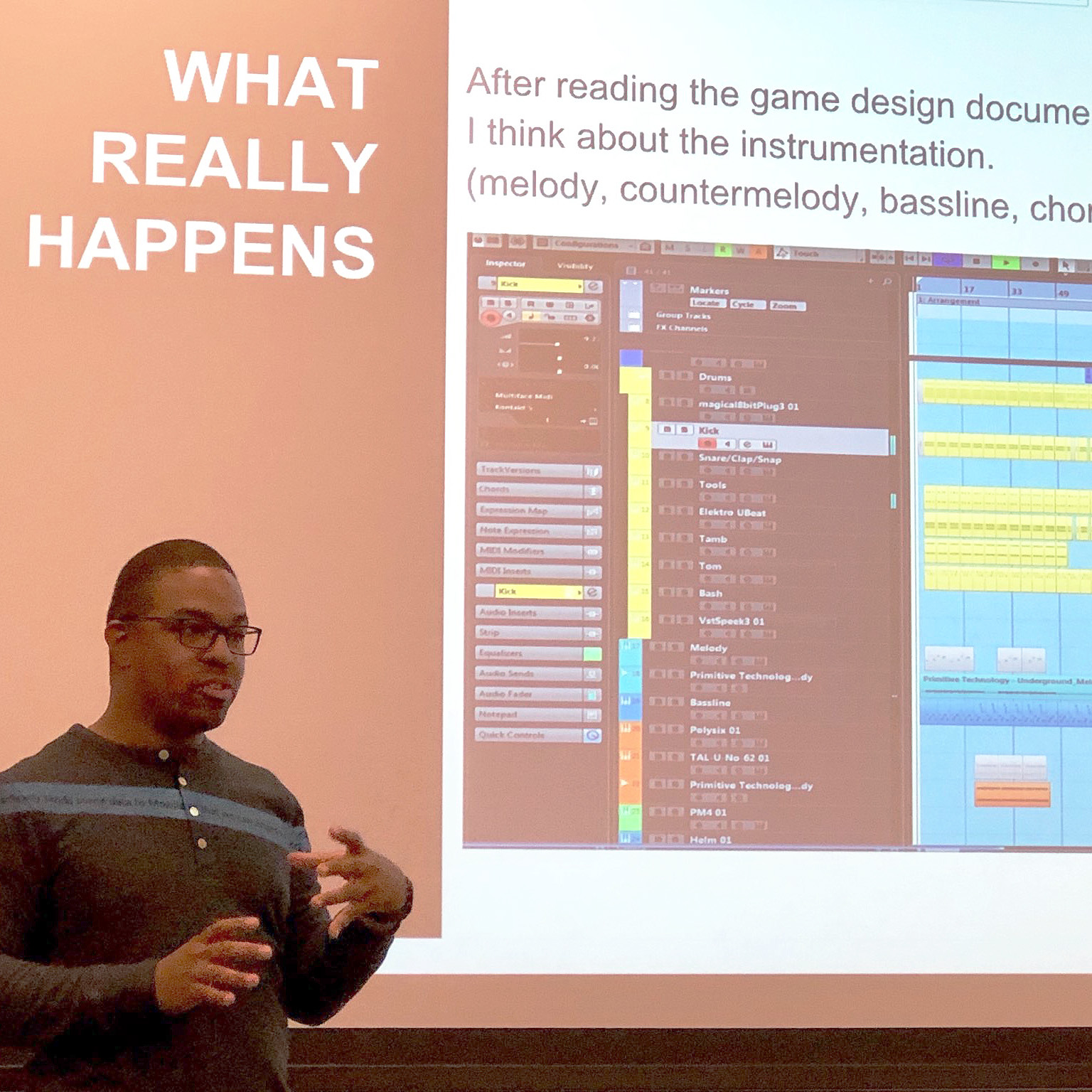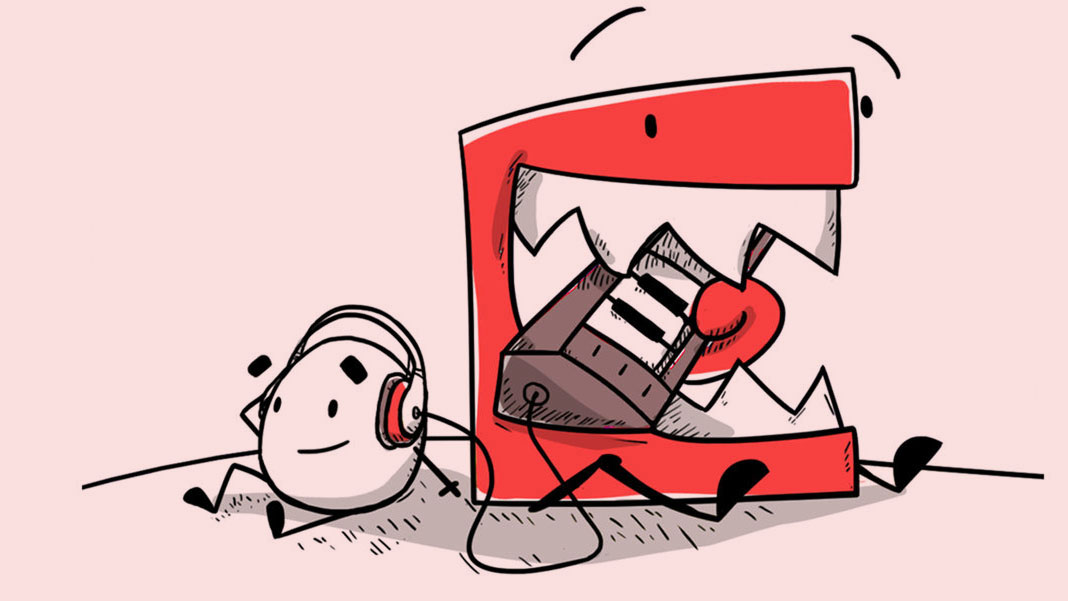Dedicated to making the sound of games, Chase Bethea interned at Mobotory games while studying music at Moorpark College. Besides earning his associate’s degree in Music Theory and Composition at Moorpark, he also went on to earn another associate’s in Audio Engineering from the Los Angeles Recording School, and a Bachelor of Music in Media Composition at California State University, Northridge. On top of that, he graduated with honors for every degree.
Bethea has used his training and experience for a long partnership with developer Fancy Fish Games and several of their titles, including Different Color and Deity Quest. Outside of Fancy Fish, Bethea has produced sound for other developers, like Tim K’s Electron Flux and Simplicity Game Development Studio’s Cubic Climber.
“Every game needs to have a specific sound identity. If all the audio sounded the same, the games would have no character and be boring as well as non-engaging.”
Cliqist talked with Bethea over email about his process, his influences, and that time he made music for Cartoon Network’s Adult Swim.

Video Game Music Online nominated Chase Bethea for Independent Composer of the Year in 2015 due to his audio work on Fancy Fish Games’ I Can’t Escape: Darkness.
Cliqist: Could you please tell us a little more about yourself?
Chase Bethea: I am a professional video game composer, creative and technical sound designer and arranger. I have been working professionally in the industry for eight years on multiple mobile and PC titles.
How did you get into music and audio?
My first instrument was the alto saxophone and I was also in choir. I was in Advanced Band and choir from fifth to seventh grade. When I would practice alto saxophone, I would learn jazz pieces by ear and transcribe them, as well as write my own compositions. Later in college, I started learning classical piano and received lessons from a wonderful woman and piano teacher, Mona DeCesare. I got into audio in 2001 using sound recorder and a cheap web mic on the Windows 2000 operating system. After that, I moved to Cool Edit 2.0 (now known as Adobe Audition). My goal was to make my own songs, and songs for my mother. I continued the path to audio by attending the Los Angeles Recording School, in which I graduated a year later with honors.
How would you describe the similarities and differences between your work as a composer, a sound designer, and an audio engineer?
The differences I have noticed between all three is the approach. When I write music, I think about themes, rhythms and instrumentation. When I work on sound design, I think about animation to audio functionality. Audio engineering works well with composition and sound design because it comes down to production quality, and having both be as sonically the best as they can be. I might use some of the same mixing plugins as I do for composition in juxtaposition with sound effects. For example, I’ll use iZotope Nectar for my composition pieces and a sound effect, but I may not use my external tube compressor on every sound effect I make.

Chase Bethea was behind the sound design of Chashu Entertainment’s Deputy Dangle, a game about chasing down a criminal in Dangleton.
Why create different forms of audio for games? What draws you to that medium?
Every game needs to have a specific sound identity. If all the audio sounded the same, the games would have no character and be boring as well as non-engaging. Games are a collaborative art form amalgamating all disciplines from writing, art, design, programming and audio to tell stories, create challenges and exhibit fun for the player.
Personally, I thrive on collaboration and games is what pulls me into working in this industry. It revolves around computers and tech. By conflating my passion for audio and technology, I have become enamored with creating cool experiences for players that appreciate the medium as much as I do.
How do you approach crafting the sound of a game?
Once I have a meeting or two with the developers, I find out what their vision of the project is, and what they had in mind initially. During this time I can compare and contrast game ideas and similarities based on inspiration and influence. For example, if the developer is talking about mechanics with strategy, I may bring up a game such as Future Tactics. If the level design is horror in space, I may compare it to the game Martian Gothic: Unification. Being a player, I can pull from these references and share them with the team so that they can get a sense of my perspective of how I will approach the sound.

Omiya Games’ Not a Clone featured sound design and technical sound design by Chase Bethea.
Once that happens, I create a fresh instrument template in my DAW (Digital Audio Workstation) and sketch out ideas on the piano. Once the skeleton sketch is complete, I orchestrate and arrange everything to be full, create a game loop for implementation, and implement it into the game for testing. If it doesn’t quite fit, I make modifications based on tempo, key, form sections, etc.
For sound design it is understanding what the animation does and making sure the identity of each sound is unique with a beginning, middle, and end. I either record doing Foley or I choose samples from sound libraries, adding 4-10 layers of sounds until it is mixed and feels right. I make three versions with audible changes for comparison. The developer chooses one of the three. Then, I implement the sounds in the game for testing, and if it works I finalize the mix of the sound. If not, I make specific layer tweaks by subtracting or replacing the sound in question.
What influences your music and sound design?
I am heavily inspired by Japanese music and sound design. I am also influenced by jazz music. These influences stem from my childhood, playing games on Game Boy and PlayStation and accessing the sound tests or CD player through the games. Growing up in Chicago, I was introduced to jazz. It was always on the radio station in both of my parents’ cars. Later on, I found out that I liked bands such as Nine Inch Nails, Linkin Park and Radiohead; and in contrast, [I also liked] composers such as Philip Glass, Gershwin, Ravel and Harold Budd.
What is it like speaking at your alma mater Moorpark College?
It is a dream come true! When I attended Moorpark College back in 2009, I remember attending the Game Design Club and thinking to myself, I want to speak here once I am in the industry. When Tim Samoff [who taught at Moorpark] reached out to me on Twitter to be a guest speaker, I was elated! I love giving back and educating new game designers.

During a talk at Moorpark College, Chase Bethea discussed various aspects about working in game audio. Topics included the responsibilities of a composer and sound designer, and joining the game development team early.
When we met earlier at this year’s GDC, you mentioned that you were part of the committee that chose the nominees for the 17th G.A.N.G. Awards (Game Audio Network Guild). Could you talk more about that?
Sure. I received an email from two of the members on the advisory board out of the blue in January of this year. My responsibilities were to abide by the guidelines in which the submissions were to follow. For example, music of the year submissions were to submit a video no more than ten minutes long demonstrating how the music coincided with the game through gameplay. Anything over ten minutes was to be disqualified, and anything that was submitted as a trailer was to be disqualified.
There were several categories that I was to pull my top five from, and over 30 submissions per category. That was not all the categories either. Other people selected to be on the committee tackled a different portion of categories. The committee had to watch and listen to lots of music in less than a month, and it was all voluntary. It was a very interesting experience and I was happy to lend my honest votes.
You also told me before that you were currently scoring a game that reaches about 2.5 million players all over the world. Could you elaborate?
Yes. The game that I am scoring is called Aground. The project concept was born by Fancy Fish Games back in 2017. The demo launched in October 2017 on Armor Games, itcho.io and Newgrounds, and from there is where full interest from the Internet began and the community grew. Fancy Fish searched for publishing before the demo launched, but no one was interested until after the demo launched. However, a few months before the Early Access release, Fancy Fish Games received more interest from publishers; but again, the publishers dropped the ball.

According to the game’s website, Aground “is a resource-gathering and crafting game with a story, focused on the theme of Progression.”
This hasn’t stopped the rocket fuel from development as our loving and honest community pushes us to make the best game we can. Updates for the game occur about every two months that add a lot of progression and story from the previous build. The community loves it and that’s what keeps them engaged. I’m currently on the project full-time scoring the soundtrack, which is about five tracks away from completion, as well as doing the sound design to make every aspect as unique as possible.
Do you have any favorite projects?
Currently Aground is my favorite project, but before that I would say Super Happy Fun Block, which was a mobile adventure puzzle game.
When I was looking at your website, I saw that you created music for Adult Swim. Could you tell us more about that?
Absolutely. Back in 2011 there was a submission in their forum online for music. I made two tracks. I hired two different guitarists for each separate track, as I knew their playing styles would vary and carry through with what I was trying to portray. I finished them in two weeks and sent them off. I had no idea I would be selected for them to be played, and that it would garner so many views/listens over the years.
Is there anything else you can share about your current work or future projects?
I should also be releasing two more soundtracks this year from different games. One being the first one I worked on, and the other I’ve been working on for five years. I’m also speaking at ECGC in April this year. [Bethea spoke at ECGC on April 18.]
Do you have any tips for people interested in making audio for games?
Stay humble. Do your research about those who came in this industry before you. It will help you gauge where you stand in the middle of it all.
Thanks for taking the time to answer questions, and take care.

Chase Bethea handled music and sound design in Super Happy Fun Block, developed by Ethan Benanav (who now works at Toys for Bob). The soundtrack is available on Bandcamp.



